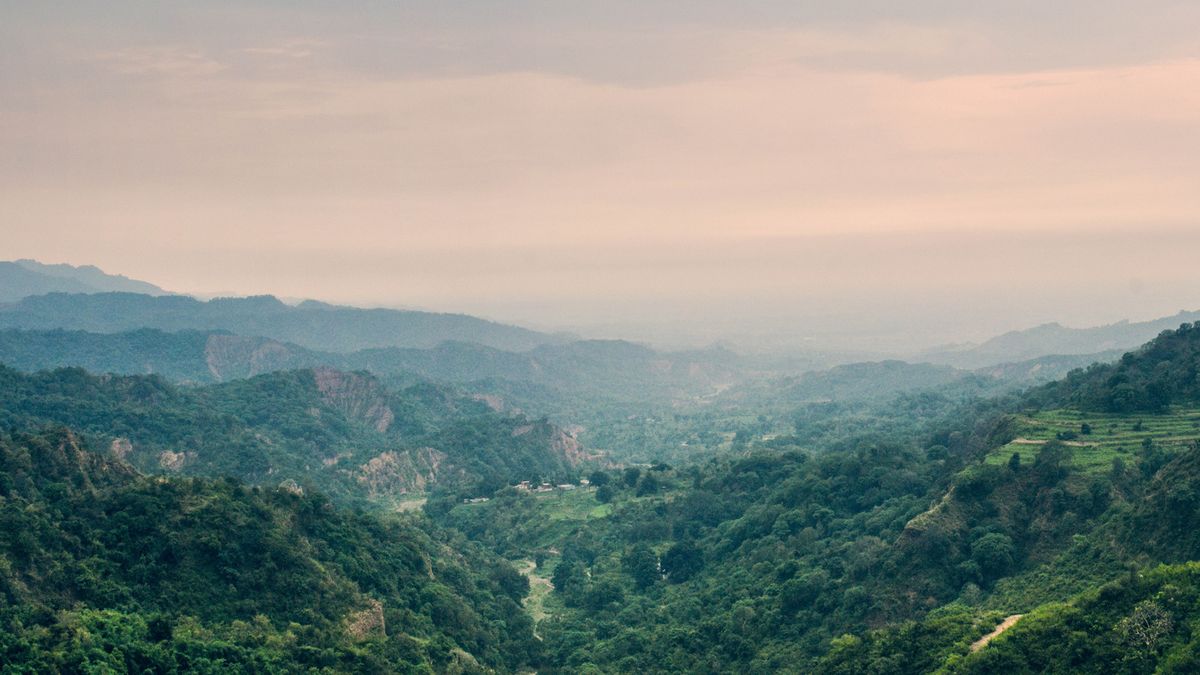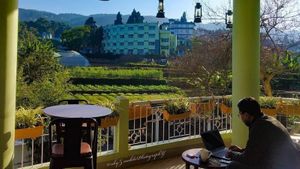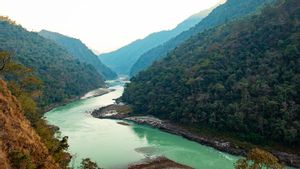It’s not easy to plan a monsoon getaway at short notice. We had about five days to spare before we dived into our respective professional and personal projects. It was the magic of the outdoors, the calmness of the mountains, and the soothing green and freshly washed air that we craved.
However, there were some key things we needed to figure out. How much rain is too much rain? Considering that we were getting away from the heavy, non-stop rain in Maharasthra, we realized that while we could stay indoors at our getaway and watch the rain, we didn’t really want to do that for five days at a stretch.
Many of the mountainous locations on our list, needed us to drive six to seven hours from the city we would fly into, in which case we would have to allot two days (to and fro) to get to our destination. The hills are also prone to landslides, which at times can lead to blocked roads and long traffic jams. A little research led us to Kasauli—a mere hour and a half away from Chandigarh—the mist-clad hill station offering everything you need to refresh, rejuvenate, and realign your soul.
Choosing a place to stay
If you aren’t driving yourself, you can opt for apps like Ola and Uber that ferry passengers regularly from Chandigarh to Kasauli with their intercity services.While it's great to be close to a big city and a highway, so that you aren’t stranded in the event of natural calamities, it brings with it the disadvantage of large crowds of tourists, especially during the weekends and public holidays. Being city folks, we yearned for solitude and thus began our hunt to find a quaint room with a view, and we made sure we got to Kasauli on a Monday and stayed till Thursday.
You will find yourself spoilt for choice. Kasauli has a rainbow of places to pick from. From renting private villas to some of the town’s oldest and most popular hotels like HPTDC’s Ros Common, or more recently opened luxurious homestays like Mayascrest—the options are plenty. We chose to stay away from main Kasauli town, and after looking at a bunch of portals we found exactly what we were looking for. Called Terrace Retreat, this Airbnb offered us a spacious bedroom overlooking a valley full of pine trees, located on Kanda road—not too far away from Dharampur.
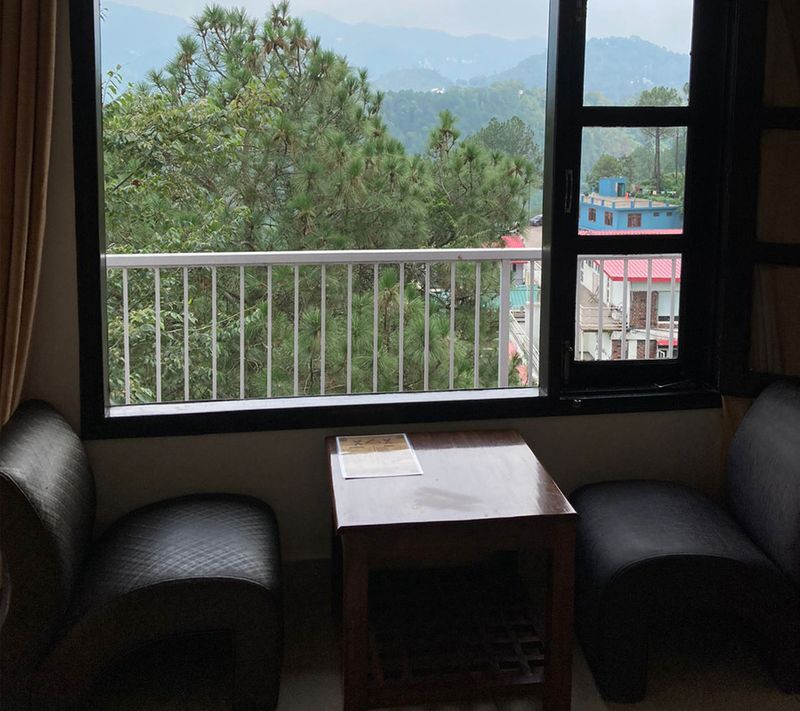
When we got there, we were relieved to find that the ‘Yuvraj Suite’ was just like the photographs that made us choose it. The open balcony and the large glass windows allow the soft rays of the sun to light up the room. There was ample space to unwind with a book or just allow yourself to enjoy the warmth emerging from the cup of steaming tea cradled in your palms. Over the next few days, we discovered the other things we grew to love about this place—the tiny, playful puppies who lived on the ground floor, the kind demeanour of the staff, and the delicious homely meals that they cooked for us. Do get the kaali dal, alu parathas, and pahadi chicken here. As much as we enjoyed waking up to the changing colours of the sky at dawn and the gentle sound of rain soaking the pines in the day, we loved the quiet nights in this neighbourhood. The dark sky was dotted with stars and the faint sounds from the village below added to the ambience.
Local transportation in and around Kasauli
While you can easily rent a cab to take you to Kasauli from the Airbnb (Rs 600 for a one-way drop to the town), we chose to take the two-kilometre picturesque hilly walk that led to the main road and hail one of the many local buses that go to Kasauli (tickets at Rs 50 per person). We figured out where to wait for the bus and which one to board with the help of some friendly locals who volunteered to assist. The bus takes a longer route than the cab since it doesn’t find too many passengers on the shorter route that the cabs use.
The local bus was packed on the first day that we used it. A young man who sat on a makeshift seat behind the driver, shifted slightly to offer me space to sit. I politely refused and noticing this, a gentleman who seemed at least two decades older than me swiftly moved to that narrow spot offering me the spacious seat next to his wife, who greeted me with a toothy grin. He generously offered my partner a seat too choosing to stand with the conductor for the rest of the journey. Though modern renditions of Himachali folk music playing on the bus distracted us, we were quite aware of the steep turns the bus took, redefining the phrase ‘living on the edge’ for us. The drivers though, masters of their craft, seemed unfazed by possible collisions with large vehicles coming from the opposite direction.
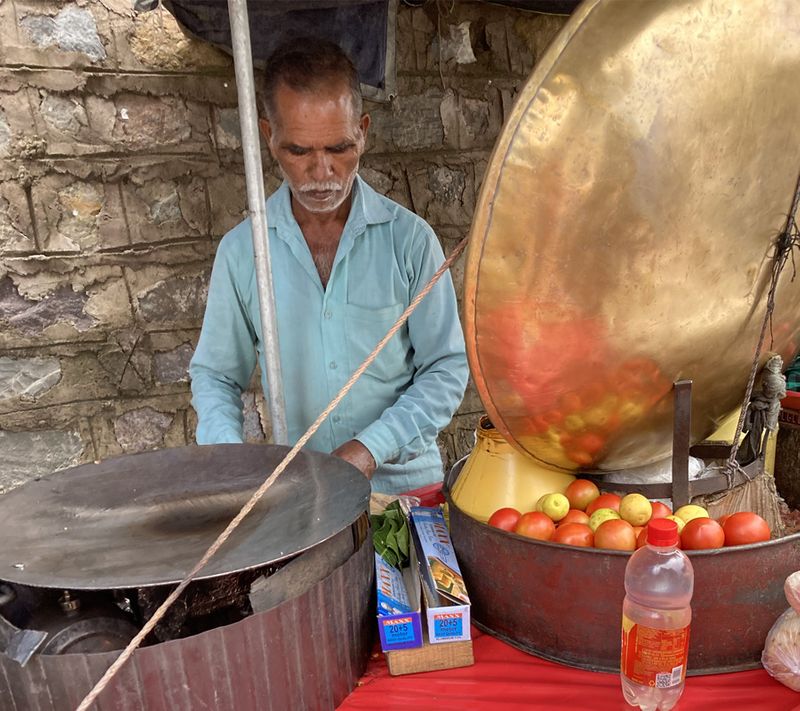
For the next couple of days, we continued to take the bus into town. Right by the bus stop, there was a street cart that made us the best ‘Chana-Kulcha’ we’d had in a long time. The rides were some of the most memorable experiences of our holiday. Some of the buses were more modern—the Volvos, featuring a large screen where one could choose the station they wanted to watch or listen to. We struck up a conversation sometimes with co-passengers, especially students. One of them clasped her hand on her mouth when we told her we had come from Pune to visit Kasauli for a few days. “All the way”, she said wide-eyed!
Exploring Kasauli

The buses dropped us at Kasauli depot. At a short, five-minute walk from the depot is the pretty Christ Church constructed in 1853. The rains had just stopped when we reached the church and there was a nip in the air. The gothic structure covered in fog looked even more surreal. There were hardly any tourists around, and we went in to see the altar and the beautiful stained glass windows around it. Close by there is a cemetery with tombstones that date back to the 1850s.
We walked past colonial-style stone structures with green roofs in the cantonment and followed the road signs leading to the charming Heritage Market. This pretty narrow stretch of town is dotted with shops selling bamboo and paper lamps, wooden handicrafts, traditional toys, knick-knacks, and plenty of eateries. One can also buy locally-made wines made of plum, apples, apricots, and even rhododendron. There are also a variety of preserves, juices, jams, marmalades, and pickles (including a rajma -kidney beans - pickle) to choose from. Softy ice creams curled up on cones, hot cups of coffee served to tourists at the pavement cafes and monkeys always alert for an opportunity to get a share of the goodies, sum up the ambience.
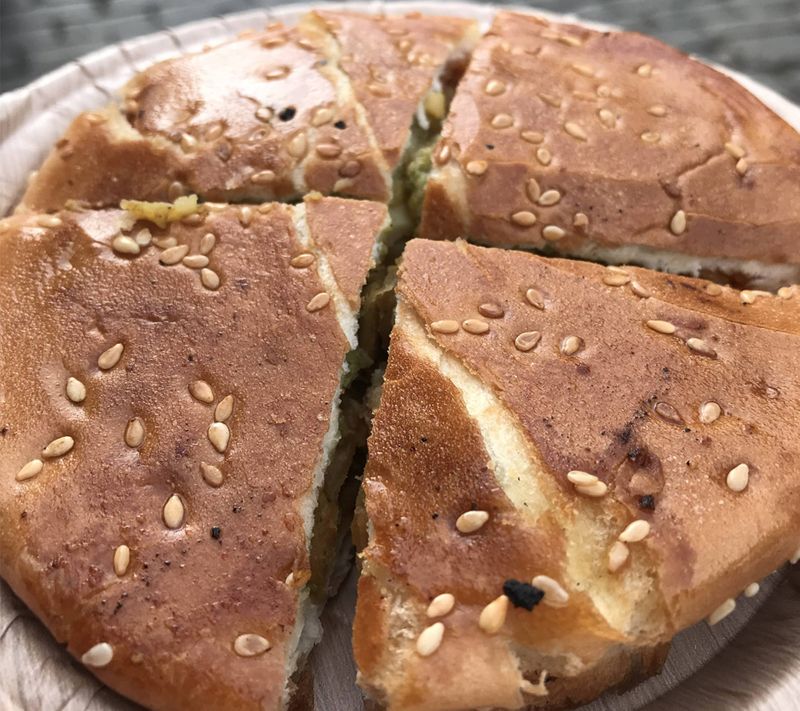
Of the eateries, we had two clear favourites—including, Narinder Sweet House, a name you would find in every online list that talks about food in Kasauli. As we stopped to meet the owner’s smiling eyes, we asked for an aloo tikki bun. “Sure,” he said pleasantly, “but our bun samosas and our gulab jamuns are our specialties.” We felt compelled to try and were not disappointed at all by the mildly spiced, crispy samosa tucked inside a soft warm bun. While we ate, the owner showed us photos of some of the famous guests that had visited the stall over the years. The place also enjoyed cult status after writer Khushwant Singh mentioned the place, stating that the gulab jamuns here were the best in the world.
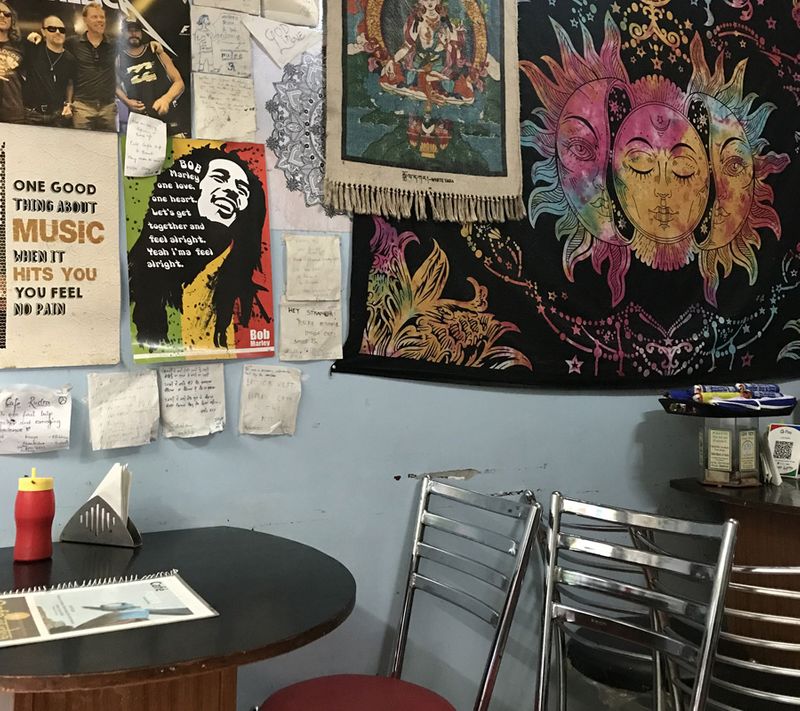
A few shops away from the sweet house is the compact Cafe Rudra. With turquoise blue walls, posters of Metallica and Bob Marley, trippy Thangka art, and a long wall full of paper napkins that hold notes from earlier visitors—sharing their experiences, giving life advice or simply confessing that they “can’t live without momos”—the place has a hipster vibe. We sat there listening to their interesting playlist, a lineup of talented yet fairly undiscovered indie bands, while we waited for our order. We loved the food. The piping hot, moist, and juicy chicken momos; the luxurious Irish cream coffee; the soft and creamy chicken sandwiches—they were all delicious. We left the cafe feeling content but not before we wrote a quick thank you note on a paper napkin, which we saw the owner pin up on the wall as we rose to leave.
On Solang road, about 30 minutes away from the Heritage Market, you can also find Dochi which serves delicious wood-fired pizzas and thick coffee shakes. The Upper Mall Road in Kasauli leads to some picturesque treks—the Gilbert Trail, the Sunset Point, and the Kasauli Club.
On track

Another interesting mode of transport we chose during this holiday was a toy train ride on the UNESCO World Heritage Site Kalka–Shimla Railway. Not wanting to walk from our BnB to the main road on that particular day, for the first time in my life, my partner and I hitchhiked and got ourselves a ride on a mini-tempo truck. While both of us squeezed in next to the driver in the front, he was kind enough to even take a slight detour once he found out that we were headed to the Dharampur station. We enjoyed sitting on a bench and watching the train slowly pull into the station as the minimal staff suddenly sprang into action. The train left the quaint railway station at 2 pm. While the route goes all the way to Shimla, we were headed to Barog, three stations away from Dharampur.
You can make reservations for the train a month in advance. Ours was ‘last-minute’ and we just about managed to get seats. The train's speed is restricted by the steep gradient that it has to climb. This allows ample opportunity for passengers to enjoy the picturesque landscape—rugged mountains, pine and deodar forests, waterfalls, valleys, tunnels, bridges, and quiet hillside hamlets.
A three-minute-long tunnel led us to Barog station. As we climbed down at the station, it felt like we were in Wonderland—a setting that looked worthy of a picture postcard. The clouds floated low, the air warning us of the showers in store. A wooden bench sat under the shade of flowers that came in multiple hues. We stood there almost in a trance watching as the station master waved his flag and the whistle went off. Passengers who had gotten off, simply because they were tempted to take photos and selfies at the beautiful station, hurried back onto the train. After the train left the station, an air of calm settled around the station. The lone vendor, selling cutlets from a cart, also wrapped up. “The next train won’t be until 6 pm,” the owner of the cart told us with a smile before making his way out.
The spooky twist
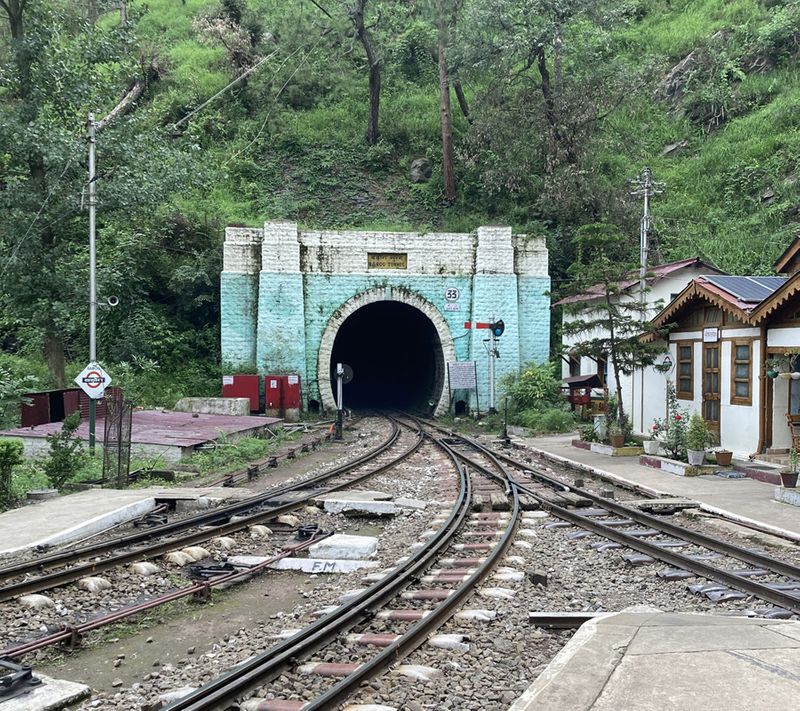
Barog was named after an engineer called Colonel Barog (strangely no one seemed to know his first name), who planned the construction of a tunnel through the mountain. To speed up the construction process, he ordered the digging of the tunnel from the two opposite sides of the mountain. It was, however, discovered later that due to his wrong calculations, the ends of the tunnel did not meet. He was thus fined by the British government and the embarrassment drove him to commit suicide. The tunnel which is now one of the longest tunnels of the Kalka-Shimla Railway is branded haunted by locals.
Not just for the ‘Gram
The only way out of this station is a steep uphill climb. We stopped mid-way out of breath and took a quick video of the stunning view—the flowers swaying mildly, a butterfly in flight, and the parrot green grass growing wildly. On hearing the clouds rumble, we quickly resumed our climb. At one point we found the road blocked by a large fallen tree. Tired we spent many moments standing there, just enjoying the blowing wind and each other’s company (sans any devices) in this tranquil setting. Then my partner walked back down to the station to check if this was the correct route out. It was, and we were expected to climb over the fallen tree!
Interestingly, just like this one, some of our memorable experiences on this holiday were ones that were not captured on camera. One such experience was the one at Monkey (Manki) Point located inside an Air Force Station. According to local lore, when Lord Hanuman was returning from the Himalayas after getting the magical herb, Sanjivani Booti, his foot touched Kasauli hilltop and that's the reason this place is named Monkey Point.
A kilometre’s walk from the main gate and a steep uphill climb of about 500 steps, leads to a small temple dedicated to Lord Hanuman. The tiring climb became rewarding, as this vantage point offers stunning ‘aerial’ views of the town of Kalka, Chandigarh, and even the Sutlej coursing through the mountains. Being an Air Force base, the security here is tight, and bags need to be deposited at the checkpoint at the entrance. Cell phones, iPads, pen drives, and other such gadgets are not allowed. While we didn’t take any photos of the gorgeous location, we are quite certain the memories of the quiet mountain air that our hearts captured will stay with us forever.
Monkey business
On our way down from the temple, a lone monkey walked up to my partner to check if he was carrying any prasad back from the temple. To complicate matters (for the monkey), both my partner and I had worn six-pocket cargo pants that day. The monkey meticulously went through each pocket for both of us. He showed no interest in our wallets that were in my partner's pockets. Disappointed at not finding anything of interest at all, he took the railway ticket from our previous day’s train ride to Barog, which he found in one of the pockets, and after giving us the look of betrayal, chucked it. Well, what’s a holiday without a few close encounters, right?
PS: If you head to Chandigarh airport on your way back from Kasauli, do stop by the Rock Garden which is particularly vibrant after fresh showers in the season—the sculptures, the cobbled pathways, the waterfalls, and the peace are all worth it. Also, treat yourself to delicious butter chicken and kebabs at the city’s famous Pal Dhaba located in Sector 28.


